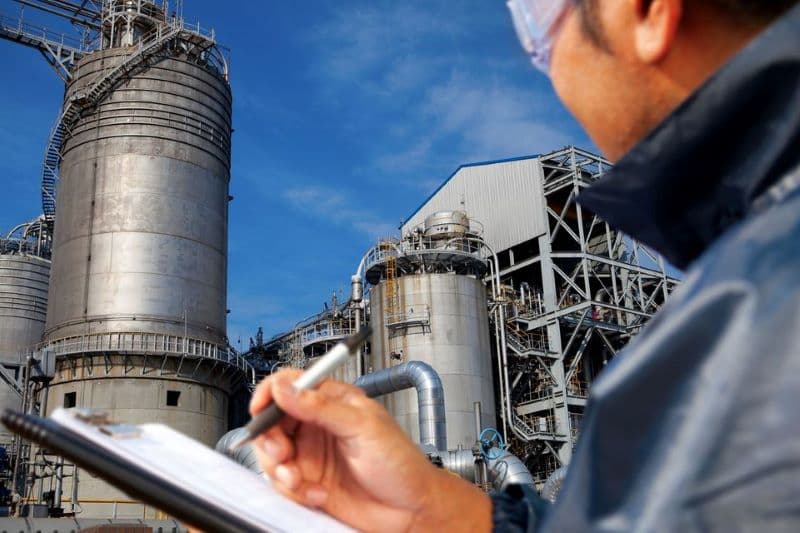Instrumentation goes hand in hand with measurement
How do you improve the measurement of your instrumentation? One thing is for sure: What is not and cannot be measured, cannot be improved. Any data-driven approach for continuous improvement in manufacturing requires definition, ongoing tracking, and reporting of key performance indicators against targets. This is as relevant in the boardroom with management as it is on the shop floor with the field instruments and systems that enable highly precise measurement, data acquisition, and analysis.
What is the point of providing the tools and applications to steward manufacturing operations conformance against targets and constraints, if the basic means are not in place? In this case, you can’t measure the operation.
Changing times in instrumentation
Many facilities were built at a point in time—some as far back as the ‘70s and ‘80s—for a particular process, a certain level of control, and a certain suite of optimization applications.
Today, the world is grappling with the impacts of the COVID-19 pandemic, and these facilities are now being operated and maintained at skeleton staffing levels. They are being retooled for a different service than their original design.
Operating envelopes are changing, and the effect of these changes on field instrumentation must not be underestimated. Instrumentation with a design rating of a particular flow rate or capacity is stressed heavily when the service or load is increased substantially. In some cases, the instrumentation for the original service is unsuitable for the new service and needs to be swapped out. This is especially the case for low-grade instrumentation that does not have the resilience of higher quality devices that can be repurposed for the new service/operating envelope. For legacy instrumentation this can be a real issue: It reduces the effectiveness of the instrumentation, resulting in periods when the plant is subject to sub-par control. This can impact plant safety and reliability, as well as profitability. Profitability can be significantly hurt because the product on the backend of the process either is burned (e.g., from an erroneous temperature measurement) or material is produced off-spec.
Newer instruments, which have been designed to retrofit well into existing infrastructure, can handle these situations much better.
Here are a few examples from refinery operations:
● Refining plants have changed their manufacturing recipes to manufacture products
that their trains/lines have not produced in a long time, if at all.
● While everyone is social distancing, refineries are trying to minimize the production of jet fuel and gasoline
to produce more chemical feedstock.
Everywhere, some units have been turned up, others turned down, and some shut down altogether. These changes impact instrumentation.
Measurement device/data considerations
Situational awareness forms the basis of effective decision making in process facilities. The foundation for situational awareness is the plant data itself, gathered from the various devices on the front line. With context and relationship, plant process data measurements constitute information. Increasing context, connectedness, and patterns/relationships, and the understanding thereof, leads to knowledge and insight.
This knowledge and insight are fundamental to effective decision making in plant operations. They are made easier through data analytics—which itself is underpinned by the quality of the fundamental plant data. Only with robust plant data can the true potential of analytics be realized. For facilities to be safe, responsive, and adaptive, plant data management can no longer be viewed as an afterthought or down the pecking order in terms of the plant management hierarchy.
Four important plant measurement device/data considerations are governance, propagation, sufficiency, and trust.
Three actions for better instrumentation
So what can be done during the current operational changes to improve or ensure the proper operation of instrumentation? Try one or more of the following
actions.
1. Undertake a value of information (VOA) audit. Knowledge and information are useless unless you are going to do something with them. While an excess of process data presents many opportunities, it can also paralyze an organization and hinder speedy decision making. It can also cost a lot to gather and maintain.
Because the value of information varies depending on circumstances and strategic priorities, which information sources matter the most in your plant?
Evaluate the key value drivers of the plant. Assess what plant data and information is required by relevant applications and personnel to create value. Inventory the key devices/instrumentation needed to ensure value creation can be sustained.
2. Implement or review instrumentation related management of change (MoC) processes and procedures. Quality measurements must be maintained when switching between plant production levels, product line batches, or with other plant configuration changes, as these stress instrumentation devices in different ways. Assign responsibility to an individual within the instrumentation discipline to work with operations for creating or updating formal management of change processes and procedures for key plant measurement/data considerations.
Based on this, establish a fleet-wide measurement device monitoring and assurance program. All devices should have a purpose, goals, and target performance to achieve and constraints and limits to respect. Some are explicit, and some are implicit. Some are simple to measure, and some are derived from complex chemistry, physics, and math. Some are static, and some are dynamic. Some are constant, and some are conditional.
A well-managed operation will know what these are, will document why they are needed and the consequences of nonconformance, and will have personnel accountable for compliance. A fleet-wide system for tracking and reporting performance, as well as assuring compliance, is a necessary first step to operational improvement.
3.Redeploy operations staff. Where unit operations have been turned down or temporarily shut, can those operators be redeployed to support re-instrumentation elsewhere in the plant? Or are there additional measurements where measurement sufficiency (coverage or frequency) or integrity/trust issues exist? For example, regular and accurate pressure measurements and flow rates at either end (top or bottom) of impulse lines on distillation columns are vital for a reasonably accurate mass balance to be achieved in order to match models to plant data. After all, many analytics and rigorous dynamic models use on-line measurements from the plant to provide information about the status of the plant that cannot be directly measured. This information can predict the future trajectory of the plant. It advises the operators on the action required to keep the plant within its operating window and at its optimal operating point. However, accessing these measurement locations is not always straightforward.
Downtime for operations staff could be used to find sustainable solutions for these challenges to use when operations ramp up again. The result: better ways to retrofit, upgrade, or maintain measurements across the plant.
Interesting time for the next step towards autonomous plants




